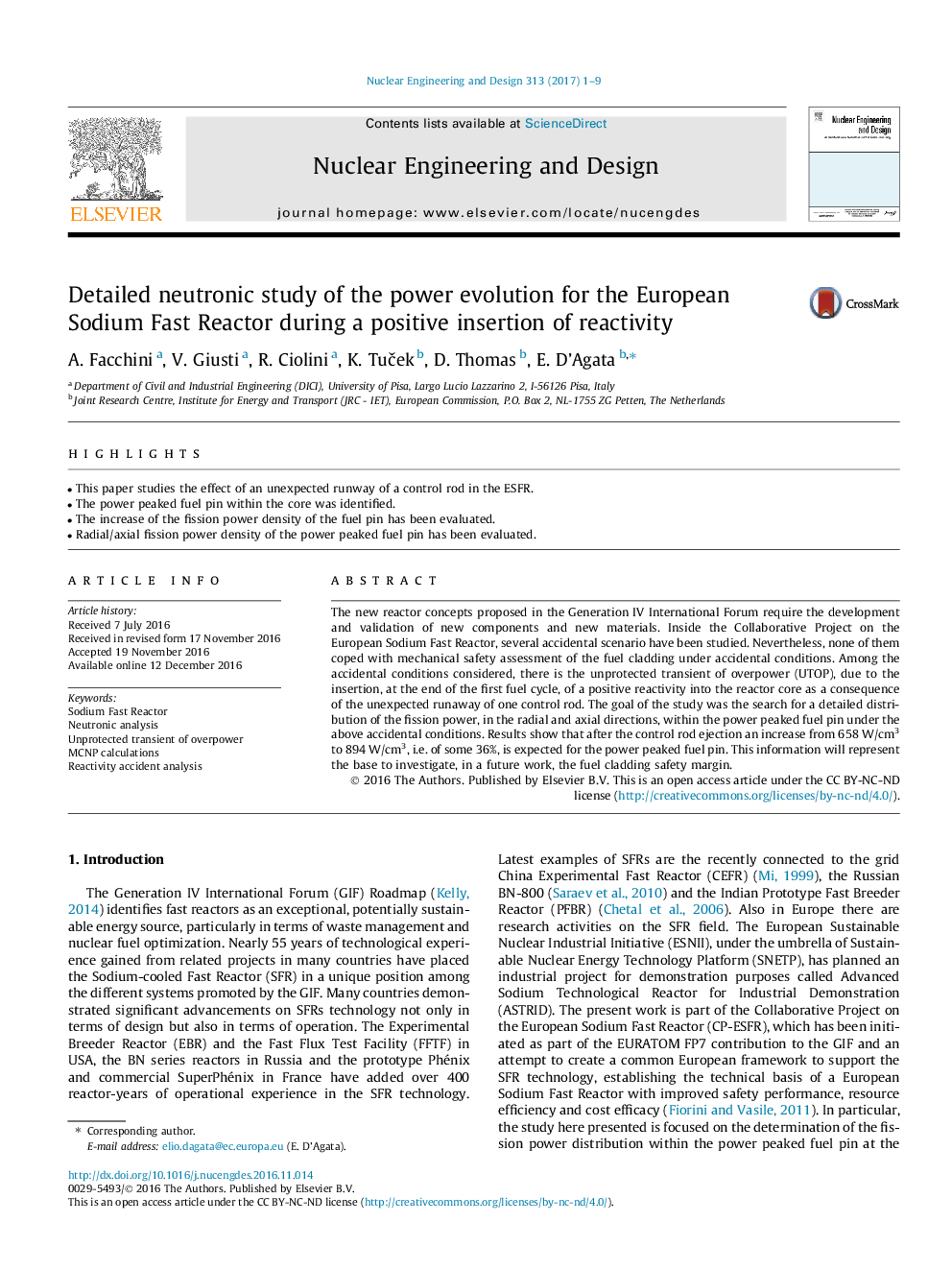| Article ID | Journal | Published Year | Pages | File Type |
|---|---|---|---|---|
| 4925534 | Nuclear Engineering and Design | 2017 | 9 Pages |
â¢This paper studies the effect of an unexpected runway of a control rod in the ESFR.â¢The power peaked fuel pin within the core was identified.â¢The increase of the fission power density of the fuel pin has been evaluated.â¢Radial/axial fission power density of the power peaked fuel pin has been evaluated.
The new reactor concepts proposed in the Generation IV International Forum require the development and validation of new components and new materials. Inside the Collaborative Project on the European Sodium Fast Reactor, several accidental scenario have been studied. Nevertheless, none of them coped with mechanical safety assessment of the fuel cladding under accidental conditions. Among the accidental conditions considered, there is the unprotected transient of overpower (UTOP), due to the insertion, at the end of the first fuel cycle, of a positive reactivity into the reactor core as a consequence of the unexpected runaway of one control rod. The goal of the study was the search for a detailed distribution of the fission power, in the radial and axial directions, within the power peaked fuel pin under the above accidental conditions. Results show that after the control rod ejection an increase from 658Â W/cm3 to 894Â W/cm3, i.e. of some 36%, is expected for the power peaked fuel pin. This information will represent the base to investigate, in a future work, the fuel cladding safety margin.
